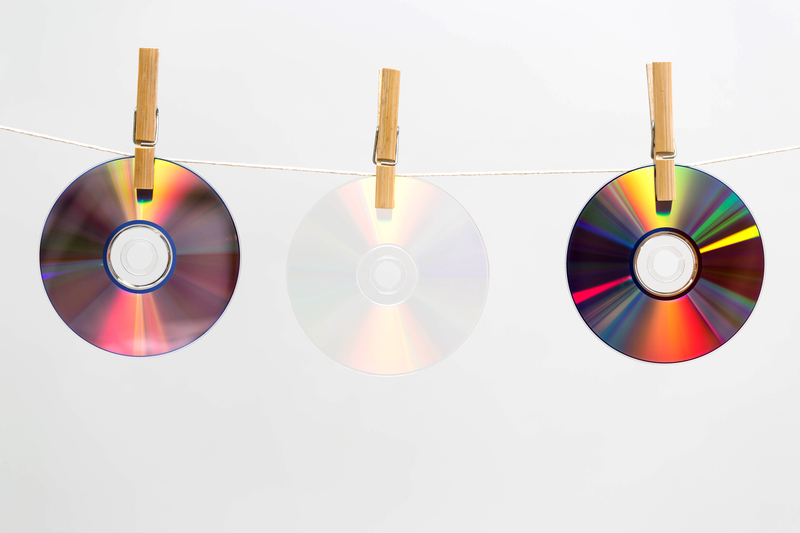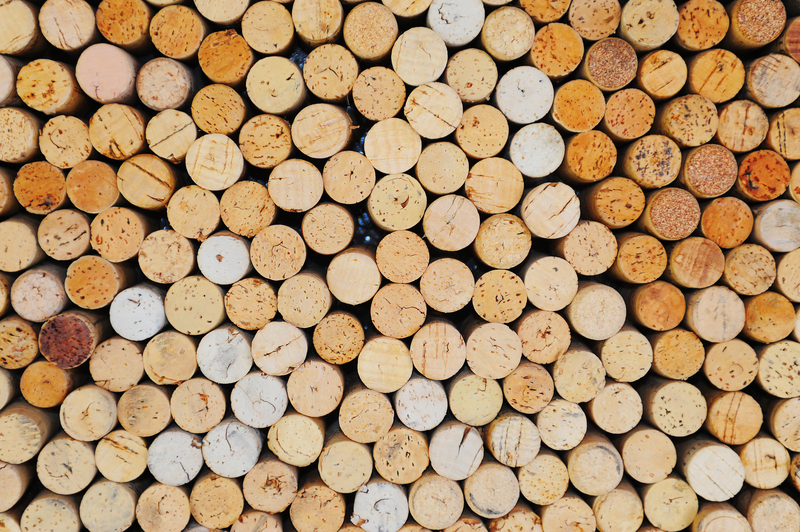Design-Forward Upcycling Projects for Fashionable and Functional Results
Upcycling is more than just a trend--it's a vibrant movement towards sustainability, creativity, and innovation. By reimagining discarded materials into chic and useful products, design-forward upcycling projects marry aesthetics with purpose. Whether you're revamping your wardrobe, decorating your living space, or seeking unique gifts, upcycling allows you to express style and consciousness. This article dives deeply into design-forward upcycling ideas that result in both fashionable and functional outcomes for everyone.
Table of Contents
- Introduction to Upcycling
- Benefits of Design-Forward Upcycling
- Fashion-Forward Upcycling Ideas
- Functional Upcycling Projects for Every Home
- Creative Materials for Upcycling
- Tips for Design-Centric Upcycling Success
- Showcase: Inspiring Design-Forward Upcycled Projects
- Frequently Asked Questions
- Conclusion: Upcycle with Style and Function
Introduction to Upcycling
Upcycling refers to creatively transforming waste materials or unwanted products into new items of greater value or quality. The concepts of recycling and upcycling are often confused, but upcycling stands out because it often improves the original material, both in form and function. Today's design-forward upcycling movement leverages modern aesthetics, artistic touches, and innovative approaches to deliver fashionable and functional results that reduce waste and inspire individuality.
Benefits of Design-Forward Upcycling
Integrating design principles with upcycling offers a wealth of advantages. Here's what makes design-conscious upcycling so appealing:
- Sustainability: Reduces landfill waste and environmental impact, promoting mindfulness in consumption.
- Personalization: Customized results reflect your style and taste--each piece is unique.
- Affordability: Saves money by using existing materials rather than buying new.
- Creativity and Innovation: Encourages problem-solving and creative thinking through design.
- Functionality: Breathes new life into items, turning them into usable tools, furniture, or fashion.
- Conversation Starters: Handmade, upcycled creations have stories that intrigue and inspire.
When thoughtfully executed, design-forward upcycling projects give you more than just an eco-friendly product--they offer innovative, stylish solutions that serve a purpose.
Fashion-Forward Upcycling Ideas
The world of upcycled fashion is booming, with designers and DIYers alike turning preloved materials into runway-ready garments and accessories. Here are some stand-out projects for those who want their wardrobes to reflect eco-chic style:
1. Denim Remix: Statement Jackets and Boutique Bags
- Transform old, worn jeans into a trendy patchwork jacket. Mix fabric textures, add embellishments using scrap textiles or embroidery, and crop the length for a modern silhouette. Denim upcycling is endlessly versatile.
- Boutique-inspired bags from denim: Cut and combine denim panels to craft totes or crossbodies, utilizing pockets for functional flair.
2. Shirt-to-Skirt Transformation
- Repurpose men's shirts and blouses by converting them into fashionable skirts, dresses, or off-shoulder tops. Play with button placements, collars, and cuffs for unique, eye-catching details.
3. Upcycled Jewelry from Vintage Elements
- Use broken jewelry, old watches, or stray buttons to design funky necklaces, bracelets, and earrings. Vintage keys, coins, and fabric scraps all make extraordinary statement pieces.
4. Sweater Patchwork: Cozy Accessories
- Don't toss out holey sweaters--cut and stitch them into scarves, mittens, or beanies. Upcycle several patterns for a fun, textured look.
5. Footwear Refresh: Painted Sneakers
- Give old shoes a new lease by hand-painting them with bold patterns or subtle ombre fades. Custom upcycled footwear can be both artful and on-trend.
Functional Upcycling Projects for Every Home
Upcycling isn't just about looking good--it's about making your environment work better for you! Here are ways to blend innovative, design-forward upcycling techniques with practical home solutions:
1. Pallet Perfection: Furniture with Flair
- Turn wooden pallets into coffee tables, bookshelves, or even bed frames. Sand and stain for a polished finish, or paint bright colors for a statement piece.
2. Glass Jar and Bottle Revamp
- Mason jars and wine bottles can be beautifully transformed into pendant lights, chic vases, or creative storage solutions.
- For extra design-forward flair, use macrame, etching cream, or glass paints.
3. Drawer to Organizer Conversion
- Repurpose old drawers as wall shelves or under-bed organizers. Add fabric or wallpaper to the drawer interior for a touch of style.
4. Suitcase Revival: Vintage-Luxe Seating
- Upcycle robust vintage suitcases by adding legs and cushions, creating one-of-a-kind ottomans or end tables.
5. Upcycled Planters: Green & Gorgeous
- Use everything from tin cans to thrifted teapots to craft unique plant homes. Add deconstructed jewelry for embellishment.
6. Textile Transformations: Rugs and Throws
- Braid strips from old T-shirts, linens, or towels to make durable, stylish rugs. Mix colors for modern, geometric patterns.
Creative Materials for Design-Forward Upcycling
The best upcycling projects start with the right materials. Here are some surprisingly versatile items to spark your creativity:
- Fabric Scraps: Everything from silk to canvas, perfect for patchwork, weaving, or embellishments.
- Pallet Wood: Accessibly sourced, robust for furniture or art installations.
- Glass Jars and Bottles: Ideal for lighting, storage, or vases.
- Old Furniture: Chairs, tables, or dressers can be dramatically reinvented.
- Metal Parts: Sprockets, gears, and utensils add industrial charm to decor or jewelry.
- Paper Products: Magazines, sheet music, or maps upcycle wonderfully as art or stationery.
- Shoes and Clothes: The backbone of fashionable upcycling projects.
- Plastic Containers and Lids: Transform into desk organizers, planters, or kids' toys.
Tips for Design-Centric Upcycling Success
To truly achieve fashionable and functional results with your upcycling projects, remember these tips:
- Start with a Vision: Sketch your ideas or create mood boards to explore style and function before you begin.
- Think in Layers: Frequently, combining multiple materials or textures yields more beautiful results.
- Embrace Imperfection: Flaws and irregularities often add character and authenticity--don't aim for perfect symmetry.
- Choose the Right Tools: Quality scissors, adhesives, paints, and hardware make projects easier and safer.
- Test Durability: Be sure your final product is as functional as it is attractive, especially for furniture or wearables.
- Incorporate Current Design Trends: Try color-blocking, minimalism, or maximalism depending on your personal taste and the intended space.
- Document Your Work: Take before-and-after photos--these are inspirational, shareable, and may build a portfolio or blog.
Showcase: Inspiring Design-Forward Upcycled Projects
The following examples highlight creativity and ingenuity in the world of upcycling. Use them as blueprints or starting points for your own design-forward efforts.
Explicitly Elevated: The Leather Belt Chair
- What is it? Used leather belts woven over a minimalist wooden frame to create seating with warmth, texture, and a "second-life" story.
- Why Try It? The project uses strong, flexible belts, and the method is entirely customizable by mixing shades and widths.
Art Meets Function: Framed Textile Art Bulletin Boards
- What is it? Reclaimed frames fitted with fabric-wrapped cork boards, combining living room-ready art with a useful organization solution.
- Design Tip: Match fabric colors to room decor for a seamless aesthetic.
Modern Lighting: Colander Pendant Lamps
- What is it? Vintage metal colanders turned upside down with wiring to create quirky pendant lights--ideal for kitchens or creative spaces.
Wearable Art: Upcycled Silk Scarf Patchwork Coat
- What is it? Combining old scarves into a luxe, Bohemian-inspired coat. Each coat tells a personal, visual story through color and pattern.
Frequently Asked Questions
-
What is the difference between upcycling and recycling?
Recycling breaks down materials to create new ones, while upcycling transforms old products or materials into items of higher value or quality, often without breaking them down. -
What are some trending design-forward upcycling projects right now?
Many makers are focusing on modular furniture from pallets, patchwork clothing, upcycled wall art, and functional home organizers. -
Can upcycling be profitable or become a business?
Absolutely! Many creative entrepreneurs turn upcycling into successful businesses by selling on platforms like Etsy or at craft fairs. -
Are there any materials that shouldn't be upcycled?
Avoid unsafe materials such as asbestos or plastics not rated for reuse--always check that your chosen item is appropriate for its intended new use. -
How can I make my upcycling projects look polished and professional?
Take your time with finishing edges, use high-quality fastenings, and pay attention to detail--these small steps elevate any upcycled creation.
Conclusion: Upcycle with Style and Function
Design-forward upcycling projects allow you to embrace sustainability without sacrificing style or practicality. By approaching upcycling with an eye for design, you unlock the potential to create fashionable clothing, distinctive decor, and highly functional pieces that reflect your individuality. Whether you're a seasoned maker or a curious beginner, the upcycling journey is as rewarding as it is eco-conscious. Challenge yourself to look at discarded items as blank canvases--and watch as your living space, wardrobe, and lifestyle become unmistakably unique. Start your next project today and experience the fashionable and functional magic of upcycling!

